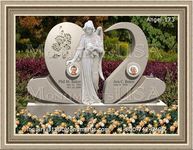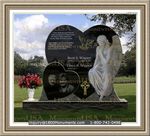|
Tips For Funeral Dress Attire
At one time, mourning a loved one meant dressing completely in black, including veils, hats and gloves. The rules of expected funeral attire have been altered over the years. The basics will remain the same though there are certain influences and circumstances that will require some occasional adjustments in style.
Black is still the go to color and a traditional suit and basic dress remain the staple fare. The difference now is that the styling has relaxed to a more semi-formal level. This means slightly more casual yet staying with the darker colors including gray and dark blue.
Men can wear the traditional suit and tie or they may opt for the slightly more casual ensemble of slacks, sport coat or blazer and collared golfing shirt. The general rule is that the look be conservative and always paired with dark dress shoes. Shirts may be light colored but pants, jackets and ties should be dark with little to no pattern print.
Women should wear conservative office style dresses, skirts or suits in the darker colors. Avoid necklines that are low, hems that are high and patterns and design elements that are flashy as these elements tend to draw attention which is inappropriate for such an occasion. Flat shoes may be substituted for heels, especially for outdoor services.
The rules for children are far less rigid. Generally speaking, their style should be an age appropriate version of what adult's clothing with boys in suits or a collared shirt and tie, and girls in dresses. Though the little ones are not expected to wear black, their colors should be dark or neutral with patterns and ruffles kept to a minimum.
Though the basics of appropriate funeral attire are a safe guideline, there are exceptions to the rules. Some cultures or religions have specific ways that mourners are expected to dress and those should be followed out of respect. Occasionally the deceased will have left behind special requests as to the type of clothing they would like guests to wear and final wishes always take precedence over tradition.
|
|



























